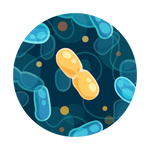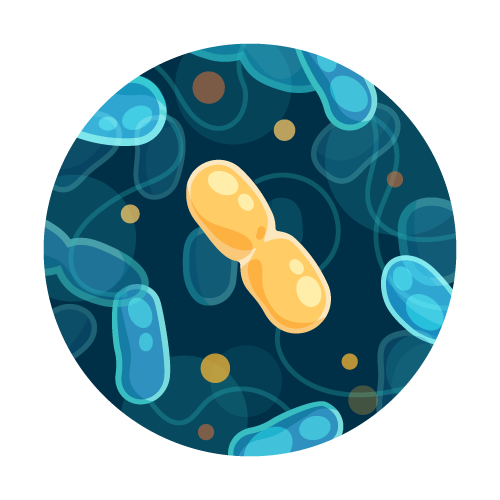
Is Boiled Water Pure?
Our blog is written by real experts— not AI. Each guide is carefully reviewed and updated based on the latest research. Plus, with no affiliate links, you can count on unbiased insights you can trust.
It’s important to know the facts about boiling your water before switching on the stove. Boiling your water addresses only a small fraction of water quality concerns, and in some cases, it can make other issues worse.
Table of Contents:
- What Does Boiling Water Remove?
- What Does Boiling Water Not Remove?
- When Should I Boil My Water?
- What’s Better: Boiling or Filtering Tap Water?
- What's the Takeaway?
What Does Boiling Water Remove?
Boiling is only effective for disinfecting pathogens (disease-causing agents) that may be present in the water. While the pathogens remain in the water, they’re no longer infectious after adequately boiling water.[11]
Pathogens include protozoa, bacteria, and viruses that attack cells or release toxins that harm the body.
Boiling water will kill these waterborne pathogens:
- ✅ E. coli
- ✅ Cryptosporidium
- ✅ Giardia
- ✅ Salmonella
- ✅ Hepatitis
- ✅ Polio
Many of these concerning pathogens can enter drinking water when it is contaminated with fecal matter. Sources of this contamination may include raw sewage overflow (especially during storms that flood urban areas), agricultural runoff, leaking sewer lines, and release from septic tanks.[4]
Fecal contamination is a major drinking water issue, so the government has protections in place to help prevent it–scroll down to learn more.
7 Pathogens that Contaminate Drinking Water
How Long Does Boiling Take to Kill Bacteria?
The disinfection process requires a one minute rolling boil, though some sources suggest a longer period of up to three minutes at high elevations and for larger water volumes.[3] The heat from boiling water damages the structural components of pathogens, including their outer shells and important proteins, so they cannot survive. See complete instructions below.
Does Boiling Water Kill All Pathogens?
Most likely. There are some pathogens that can withstand extreme heat; however, evidence suggests that the most prevalent waterborne pathogens are rendered harmless by boiling water.
Does Boiling Water Kill Parasites?
The definition of a parasite is broad. The term "parasite” can refer to protozoa, bacteria, fungi or even animals. Boiling has been shown to be generally effective in rendering most bacteria, protozoa and fungi harmless. Cryptosporidium and Giardia, for example, are both protozoa that are particularly bad for your health and can be killed via boiling.
Does Boiling Kill Mold?
Although boiling will kill mold, it's less clear if boiling neutralizes the mycotoxins that mold produces. Given the chemical stability of mycotoxins, it's possible they could survive the boiling process, but more research is needed to give a definitive answer.
Does Boiling Water Remove Minerals?
No, boiling water does not remove minerals. Inorganic substances like calcium, magnesium and sodium remain stable at high temperatures. So when you boil water, these minerals will stay in the water and even get more concentrated as the water evaporates. This can contribute to the formation of scale or deposits on pots and kettles.
Does Boiling Tap Water Remove Chemicals?
No, boiling water is not effective for removing most chemicals of concern, and may take water quality concerns from bad to worse. Boiling technically removes compounds that are volatile, because heating water increases the vapor pressure that drives compounds from their aqueous state (in water) to their gaseous state (in air). Boiling is not recommended for removing volatile compounds because often these compounds become a higher risk factor to your health when you inhale them. Examples of these include commonly found disinfection byproducts, like chloroform.
DBPs: Trihalomethanes and HAA5 in Drinking Water
What Does Boiling Water Not Remove?
Boiling water does not remove:
- ❌ Arsenic
- ❌ Lead
- ❌ Uranium
- ❌ Radionuclides
- ❌ Forever chemicals (PFAS)
- ❌ Nitrate (from fertilizers)
- ❌ Pesticides
- ❌ Some SVOCs
- ❌ Disinfection byproducts
- ❌ Microplastics
- ❌ Pharmaceuticals
- ❌ Minerals, including water hardness
Some sources suggest that boiling water will effectively remove chlorine, but this process takes around 20 minutes and will not remove the chlorine that has combined with other substances to form disinfection byproducts. These are the most common contaminants found in city water.

Does Boiling Improve Water Quality?
Importantly, boiling off some of your water will concentrate the contaminants that boiling does not remove, meaning you will drink higher levels of these compounds per glass than you would prior to boiling.
This can be very dangerous, and it is the primary reason that you should be careful in deciding whether to boil your water. For example, a person whose water contains E. coli and low levels of nitrate may temporarily boil their water to kill the E. coli, but in doing so they will increase the nitrate concentration, perhaps to harmful levels.
As mentioned above, boiling is not effective as a solution for common city water problems like disinfection byproducts.
When Should I Boil My Water?
You should boil your water only during a “boil water” order issued by the government, or during emergencies when you do not have access to disinfected water (ideally with an added filtration step, as described by the CDC).
Whether you regularly boil your drinking water at home is ultimately up to you, but it may be time and energy-consuming, and unnecessary under normal circumstances. In the worst case, boiling your water may exacerbate other water quality issues you have, so it’s important to have detailed information about your water quality before making this decision.
How Long to Boil Water to Kill Bacteria and Viruses?
If the water is cloudy, initially pass it through a clean cloth, paper towel, or coffee filter to clear it up. You can also leave it to sit undisturbed so that the cloudiness settles at the bottom. Afterwards, collect the clear water from the top and proceed with the following steps:
- Bring the clear water to a rolling boil (212 F)
- Continue to boil for 1 full minute*
- Allow the water to naturally cool down
- Store the boiled water in clean sanitized containers with tight covers.
*At elevations above 5,000 feet, boil the water for 3 minutes.
Why Does Boiled Water Taste Bad (or Flat)?
Boiling water may also negatively impact the taste of water. It reduces dissolved gasses like oxygen and carbon dioxide, which leaves your water tasting flat and unappetizing.
To improve the flat taste of boiled water you can:
- Aerate the boiled water by pouring it out of one container and into another, then allow it to sit for a couple hours.
- Add a pinch of salt to each liter of boiled water to overcome the flat taste.
What’s Better: Boiling or Filtering Tap Water?
Boiling your water is typically not a good solution for drinking water disinfection in the long term. Many treatment technologies exist that you can easily install in your home to prevent exposure to waterborne pathogens if contamination is an ongoing issue.
Water filters (including micro-, ultra-, or nanofiltration and reverse osmosis), UV disinfection, and a chlorine drip system are some of the treatment systems that are effective in preventing waterborne pathogen contamination.[5]
Top 4 Most Popular Water Filtration Technologies For Homes
Is Boiled Water the Same as Purified Water?
No. While all boiled water is somewhat purified (in that it should be free of harmful microorganisms), not all purified water is boiled.
Purified water typically refers to water that has been processed to remove both biological AND chemical contaminants. This 'purification' could be achieved through multiple filters and treatments as mentioned above. Thus purified water should be free of all types of contaminants, including bacteria, viruses, heavy metals and chemical pollutants like disinfection byproducts and PFAS.
Will Freezing Tap Water Make it Safe from Bacteria?
No, cold does not effectively kill bacteria. While freezing may damage some bacteria, many types are able to survive at very low temperatures. When the water thaws, they become active again. For this reason it's best to throw away ice made during the time of a boil water advisory or notice.
How Do I Know If My Water Is Protected from Microbial Contamination?
The answer to this question is different depending on your water source.
-
Public Water Systems
Public water systems have a number of strategies to protect their customers from microbial contamination. One widespread method for keeping public drinking water safe and free of contaminants is called the multiple barrier approach, which uses various tools and strategies to prevent contamination of drinking water from the source to the tap.
Testing for every waterborne pathogen would be difficult and expensive, so water distribution systems are instead required to frequently test for water quality characteristics that indicate whether there are any issues with the treatment process, including turbidity.[6]
Additionally, these systems are required to test for total coliform (the group of bacteria that contains E. coli as well as a large number of related, non-harmful bacteria) regularly and often (at a frequency proportional to the population served). Total coliform levels are used as an indicator of possible contamination, meaning their presence may indicate contamination but is not direct evidence of contamination by harmful species. When a test comes back positive for total coliform, the system must further test specifically for the infectious E. coli species. If a single test comes back positive for E. coli, or 5% of total coliform tests in the month are positive, the water system must report the violation to the state and the public. This may also result in a “boil water” advisory."[7]
Public water systems are also required to disinfect their water, which is typically accomplished by adding chlorine-based chemicals or by UV disinfection. And systems in contact with surface water are required to use chlorine and maintain a residual chlorine concentration to inactivate pathogens in the distribution system.[7], [8] Some waterborne pathogens are resistant to chlorine disinfection, however. One example is Cryptosporidium, a protozoa most commonly introduced to water through animal waste. Only surface water systems serving over 10,000 people must monitor their source water for Cryptosporidium.[9]
- Private well owners
Monitoring and regulation do not extend to private wells, which serve over 23 million households in the US, as estimated by the EPA. If you own a private well, disinfection is your responsibility. You should test for coliform bacteria annually, and more frequently if you suspect contamination.[8], [10]
Coliform and E. coli Water Test
Test your drinking water for the presence (P/A) of total coliform and E. coli bacteria.
What's the Takeaway?
- Boiling water disinfects water by killing waterborne pathogens that may be present. However, boiling water is not effective for removing most chemicals of concern, and may take water quality concerns from bad to worse
- Disinfection requires a one minute rolling boil, though high elevations and larger water volumes may necessitate a longer period of up to three minutes.
- Protection against pathogenic microbes in your water depends on your source:
- Public water systems are required to disinfect their water. (Local boil advisories should be followed because they suggest a utility may be experiencing issues with its disinfection capabilities)
- Private well owners are responsible for the maintenance and disinfection of their water supply. Test well water supplies for coliform bacteria annually.
Read More
▾7 Pathogens That Contaminate Drinking Water
Most Popular Water Filtration Technologies For Homes
What Can You Do About PFAS in Your Water?
Nitrites, Nitrates, and Your Health
How Dangerous Are Pesticides in Water?
Sources and References
▾- Boil water order issued for 4 Mass. towns after E. coli detection (boston.com)
- Boil Water Response-Information for the Public Health Professional (ny.gov)
- Making Water Safe in an Emergency | Water, Sanitation, & Hygiene-related Emergencies & and Outbreaks | Healthy Water | CDC
- Contamination of Drinking Water and Soil by Sewage and Water Treatment Sludge (orst.edu)
- Technical Information on Home Water Treatment Technologies | Home Water Treatment | Drinking Water | Healthy Water | CDC
- From Source to Tap | Health Canada
- Revised Total Coliform Rule And Total Coliform Rule | US EPA
- Disinfectants and Disinfection Byproducts Rules (Stage 1 and Stage 2) What Do They Mean to You?
- Cryptosporidium Fact Sheet - EH: Minnesota Department of Health (state.mn.us)
- Protect Your Home's Water | US EPA
- BOIL WATER | WHO











